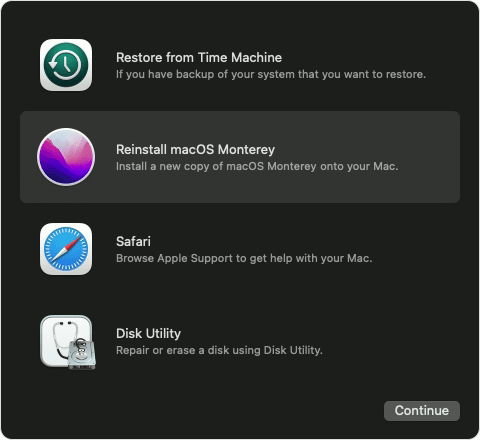

Then, you can open Disk Utility and enjoy the features mentioned above. You can either find this utility by spotlighting "disk utility", or you can access it by going to Finder > Applications > Utilities > Disk Utility. You can follow these steps to open Disk Utility. It's relatively easy to access Disk Utility after Mac boots up. Open Disk Utility on Mac in a normal startup
#HOW TO GET TO MAC OS X UTILITIES SCREEN MAC PRO 2006 HOW TO#
How to boot to Disk utility on Mac?īased on if you can turn on and boot your Mac, there are mainly two ways to access Disk Utility. Also, you should pay more attention when you want to re-partition the internal hard drive. So, if you see unknown volumes listed under the startup disk, always check through this volume before you finally remove it. It's because the T2 security chip fails to verify the integrity of the boot process. If you accidentally removed volumes like Recovery and VM, MacBook or Mac mini introduced after 2018 will have boot problems. Similar things happen to APFS formatted boot drive as well, especially for Macs that have the Apple's T2 security chip. For instance, when you add a new partition to the internal SSD, some core partitions could be deleted by the system in rebuilding the partition table.įor Macs whose startup drive is formatted with HFS+, the MacBook won't turn on after a wrong deletion of disk0s1 or the EFI boot partition. The worst case is when Mac keeps crashing after you deleted one of the key partitions in the startup disk. The next time you want to access the external hard drive on Mac, you could receive an error message like " The disk you inserted was not readable by this computer." 3. If you don't, the risk of disk corruption is increased. For example, you should always choose the Eject button before removing an external hard drive. Disk corruptionĮxcept for files being deleted, what's worse is that the hard drive itself is corrupted. So, be careful with these options mentioned above and always back files up. If you don't back up the data, you'll lose files after you erased a hard drive, deleted an APFS volume, or formatted a partition. Your documents, emails, photos, music, movies, etc. Usually, there are three possible problems. If you don't use Disk Utility in the right way, you could get into trouble. But the risk of using Disk Utility is also an important part that you should know. Of course, you can perform many disk-related tasks with Disk Utility, simple and easy. Even so, it's undeniable that what Disk Utility can do now is still good enough in many ways.ĭisk Utility brings more insights into disk management on Mac, on condition that you use this tool in the right way. For example, you can't repair disk permissions in Disk Utility anymore in macOS.

Some other features are dismissed along with the development of Mac operating systems.

Select Disk Utility on the macOS Utilities window. Restart your Mac and boot it to macOS Recovery mode. Usually, only 3 steps are required to boot to Disk Utility. In addition to normal disk management, it can launch from the Mac recovery boot drive as a recovery tool. But compared with those paid software, Disk Utility is more reliable as it's built inside the Mac operating system. Many people are looking for good third-party disk management tools.


 0 kommentar(er)
0 kommentar(er)
